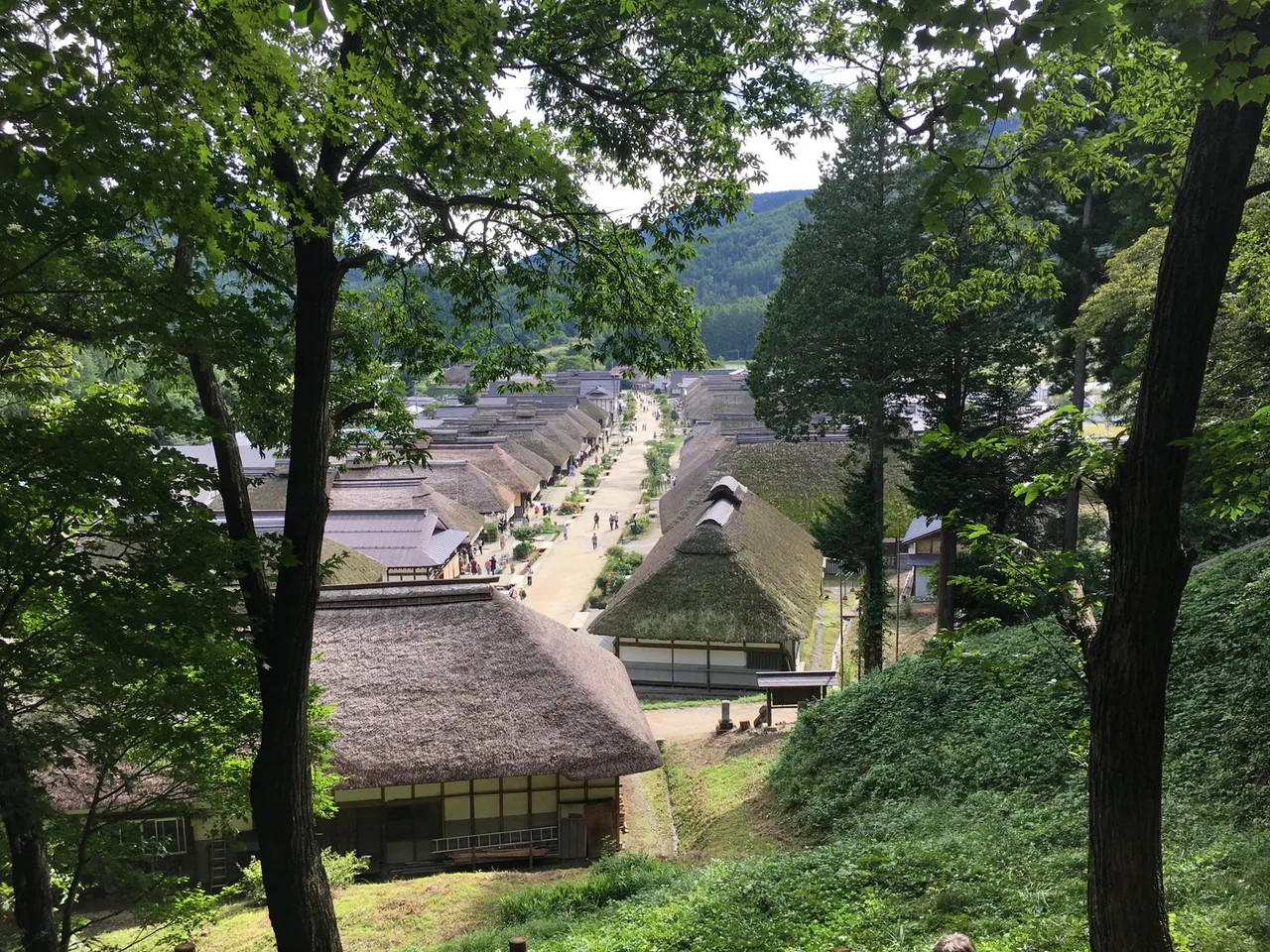
Let us again go to the Aizu region in the west of Fukushima Prefecture. In the last weeks I already tried a few times to explain and also to show what fascinates me so much in this part of Japan. Of course, one of the reasons for my repeated visits here is the strategic proximity to my current domicile, but on the other hand, I have also really taken the Aizu region to my heart. Even though it is not quite as exciting, crowded, and over-the-top as other parts of the country that most Japan tourists are drawn to. But still full of authentic and hands-on history, which you can feel and experience in many places throughout the region.
When in Aizu I mostly spend my time in the biggest city of the region, Aizu-Wakamatsu, where I feel especially fascinated by the castle Tsuruga-jo. But from there we have also been able to make several trips into the surrounding countryside, looking for the green soul of the country.
A few years ago, a trip to the more southern part of the region took us to Ochijuku 大内宿 , a former postal station on the way from Tokyo to Aizu. The time as a postal station is long gone, today the settlement is operated as a museum village and can give a small insight into life during the Edo period.
Ochijuku is laid out as a street village and was established at the beginning of the Edo period, when several post stations were built along the Shimotsuke Highway. The road connected this area north of Tokyo with the capital, which was still called Edo at that time. After the Meiji Restoration, when political power shifted back to the emperor, the 1884 Nikkō "Highway" was extended to the northern part of the Aizu region, and Ochijuku lost its importance as a postal station. However, the facility remained so well preserved in its original state that in 1983 it was designated an "Important Traditional Architectural Ensemble of the Country." Today, Ochijuki is especially known for the numerous traditional thatched buildings from the Edo period that line the main street.
These thatched buildings are now almost exclusively home to restaurants or souvernishops, trying to profit a little from the nostalgic search for our own past. The former main building now houses a local history museum.
But exactly because Ochijuku is so well preserved, it is so charming and manages to captivate even the most skeptical visitor. Walking up and down the former main street, among the traditional houses that often manage to block out modernity, you feel like you're in bygone, now unfortunately vanished times.
But what am I talking or actually writing so much? Just come with me on a little walk and see for yourself....
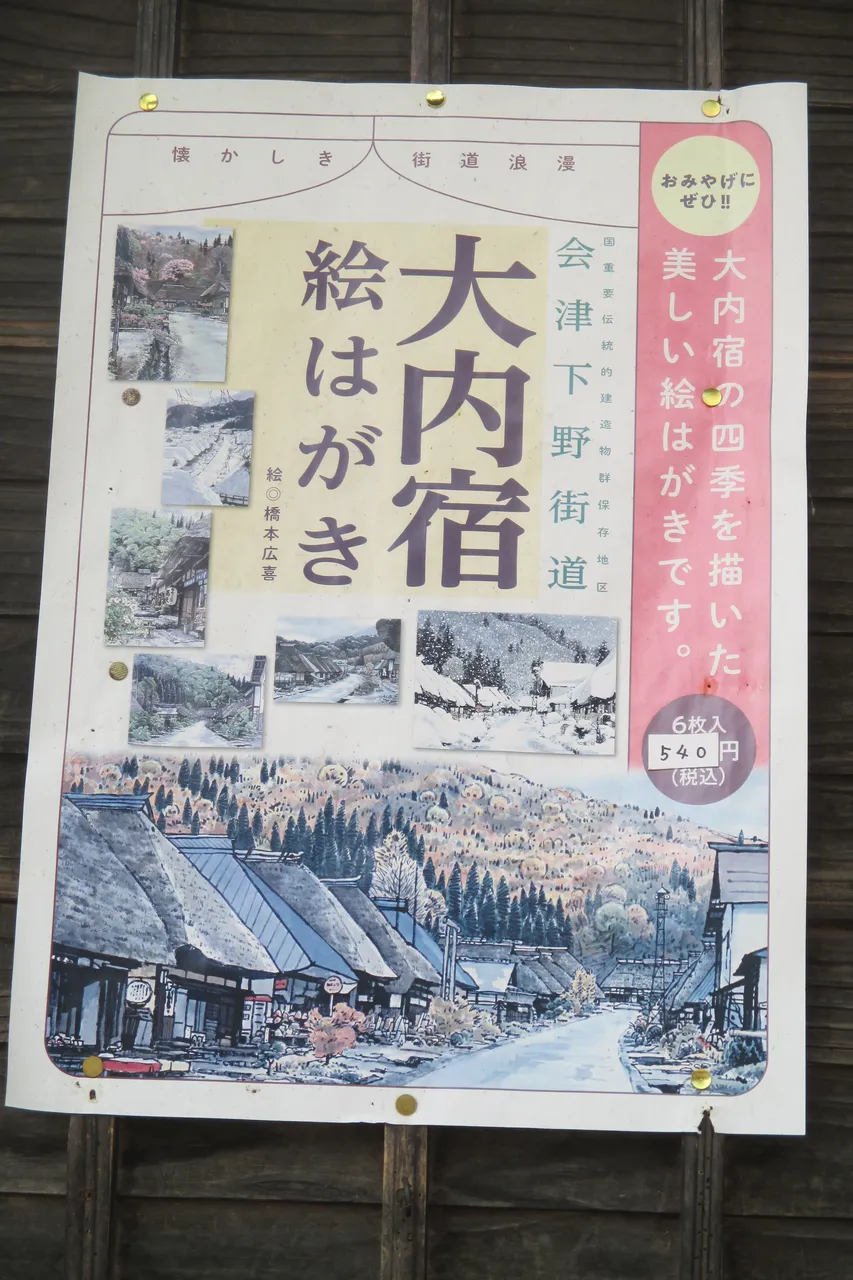
In the Edo period, postal stations (宿場町 Shukuba) were spread out along the ancient long-distance roads of Japan, and they were initially reserved for only a certain type of traveler, which included officials, daimyo, and samurai when they were traveling on business. In the postal stations, there were lodgings where these travelers could spend the night and be catered for and also entertained. The purpose of the postal stations was therefore rather official, as it was to guarantee the regulated and safe accommodation of these (official) people. Initially, the shukuba were not intended for merchants and pilgrims or ordinary citizens, but the growing trade during the Edo period also increased the travel activities of many common people. In particular, the merchant class, because of their increased wealth, was able to obtain the same and sometimes even better services as a samurai, who was often not blessed with great wealth.
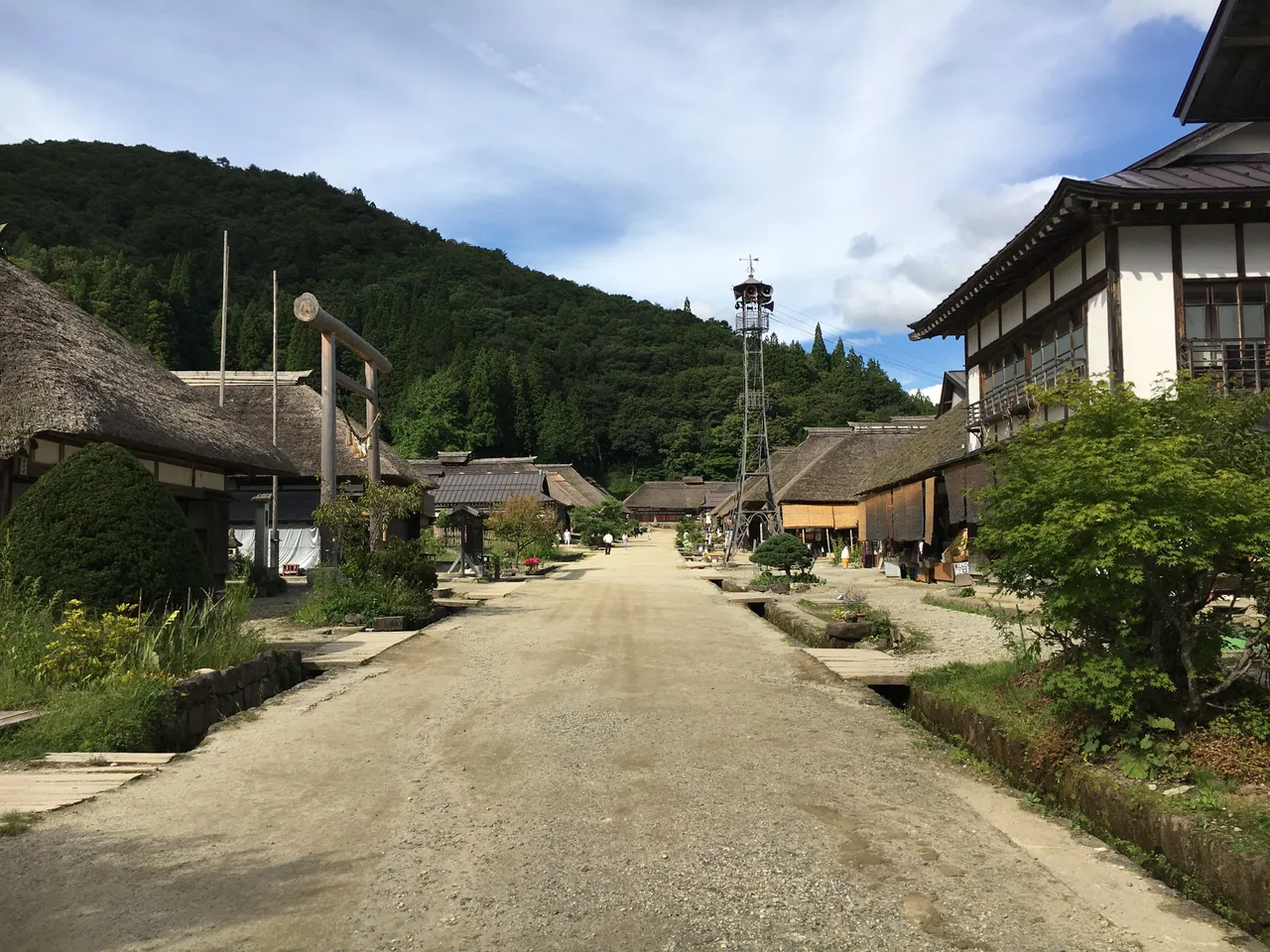
Ochijiku was located on the way from Aizu to Edo, and in earlier times has seen frequent processions of the Matsudaira clan, which controlled the Aizu region at that time, pass through and put up their camp here. During the Edo period, the daimyo, as the samurai leaders were called, were required to bring their court to the capital city of Edo and stay for a certain period of time under the immediate control of the shogun.
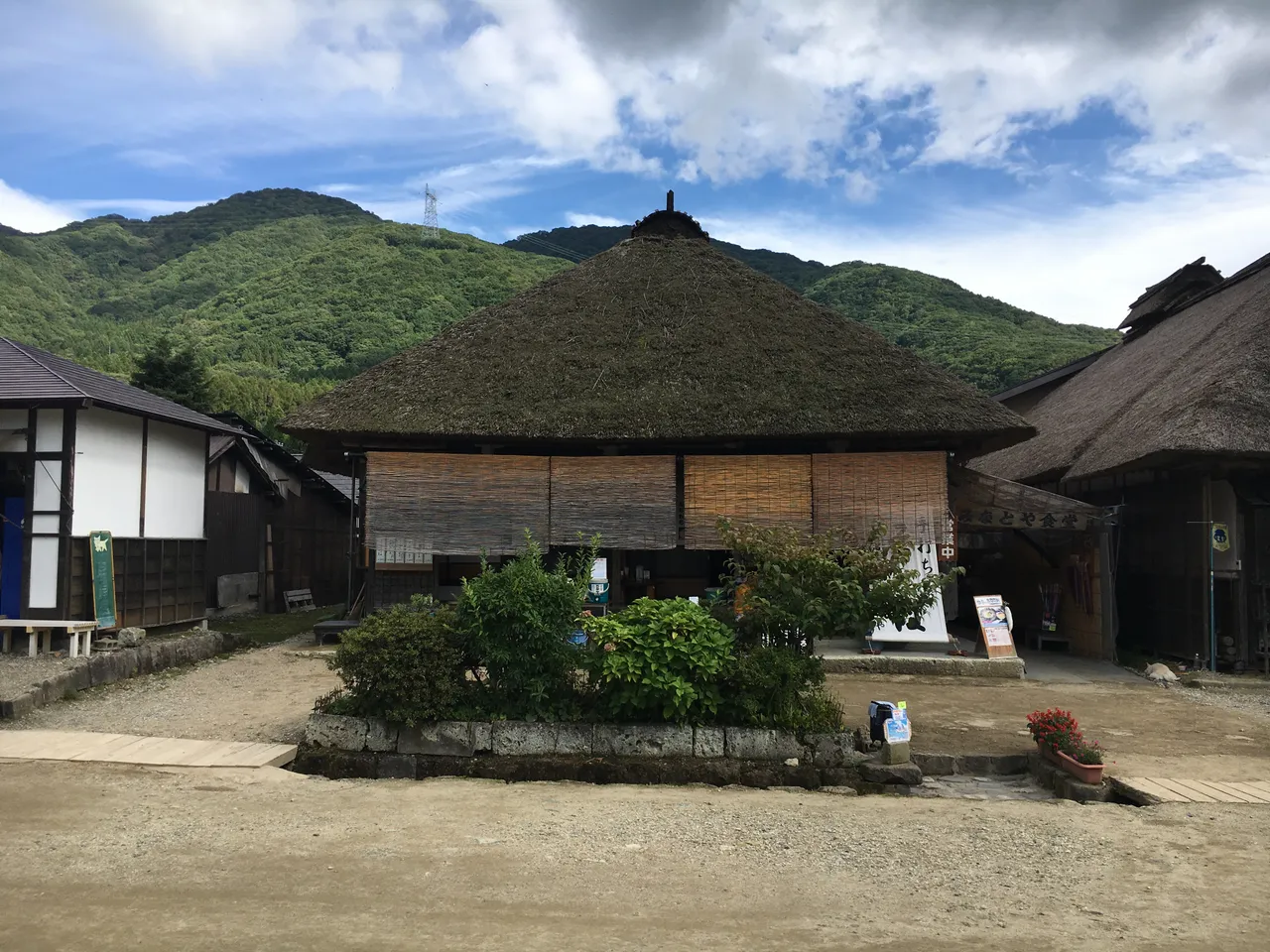
And almost as similar as on the last two photos it must have looked here 200 and 300 years ago, you just need to ignore the loudspeaker mast in the background. Travelers were accommodated in the houses lining most of the street. Depending on rank and class, guests were housed in different inns, thus the highest-ranking daimyo lived in the first inn, the honjin. Since feudal Japan had a strict class or caste system, even wealthy merchants who were counted among the lowest class were relegated to correspondingly inferior inns. But I am sure that even in those days, money was able to get them better services, comfort and luxury.

But the times when a samurai band passed through here are long gone. Today's travelers do stop here, but they only stay for a few hours. During this time, most visitors walk up the main street once and then back again, thereby taking several photos and looking in the various stores for a souvenir. And then they usually treat themselves to the specialty of the region, negi soba. This is buckwheat noodles that are eaten with a leek stem instead of chopsticks.
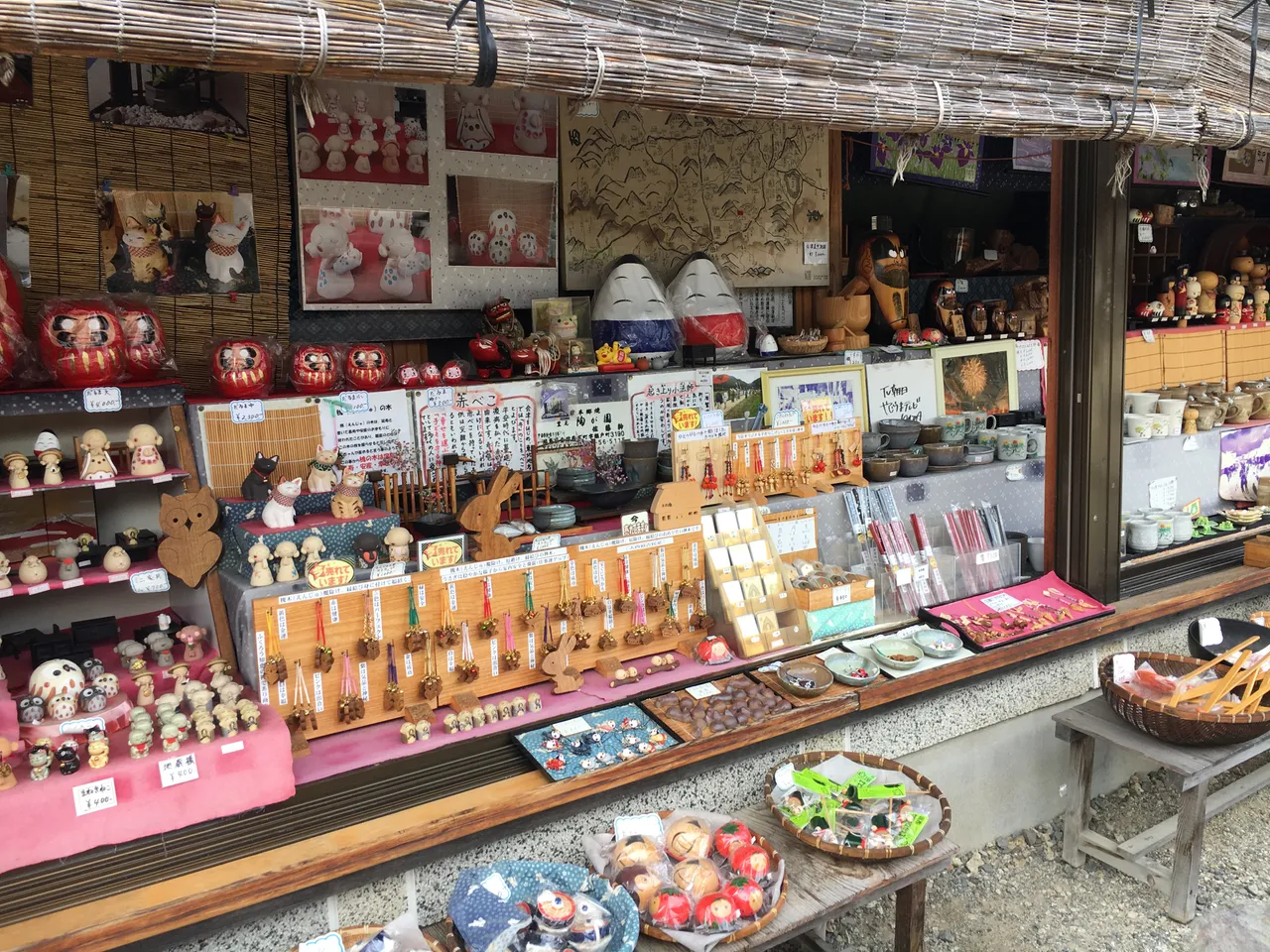
The displays of most houses look like the one in this picture. And since there is either a restaurant or a souvenir store in almost every building, no one has to go home with a full and heavy wallet.
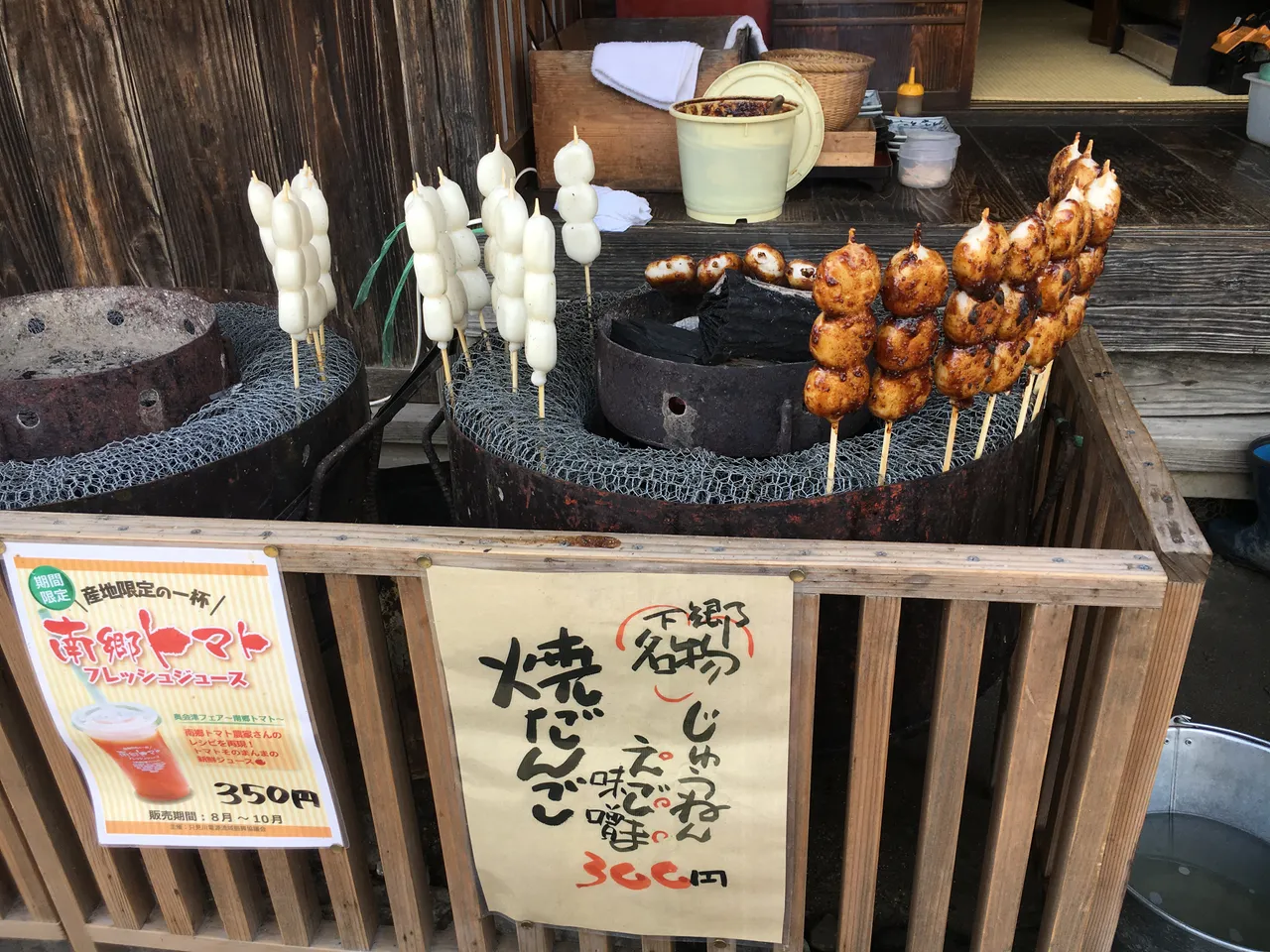
We went for a different treat and decided to have some grilled mochi rice cake with soy sauce. Sweet and spicy and a bit sticky, but still delicious and somehow typically Japanese.
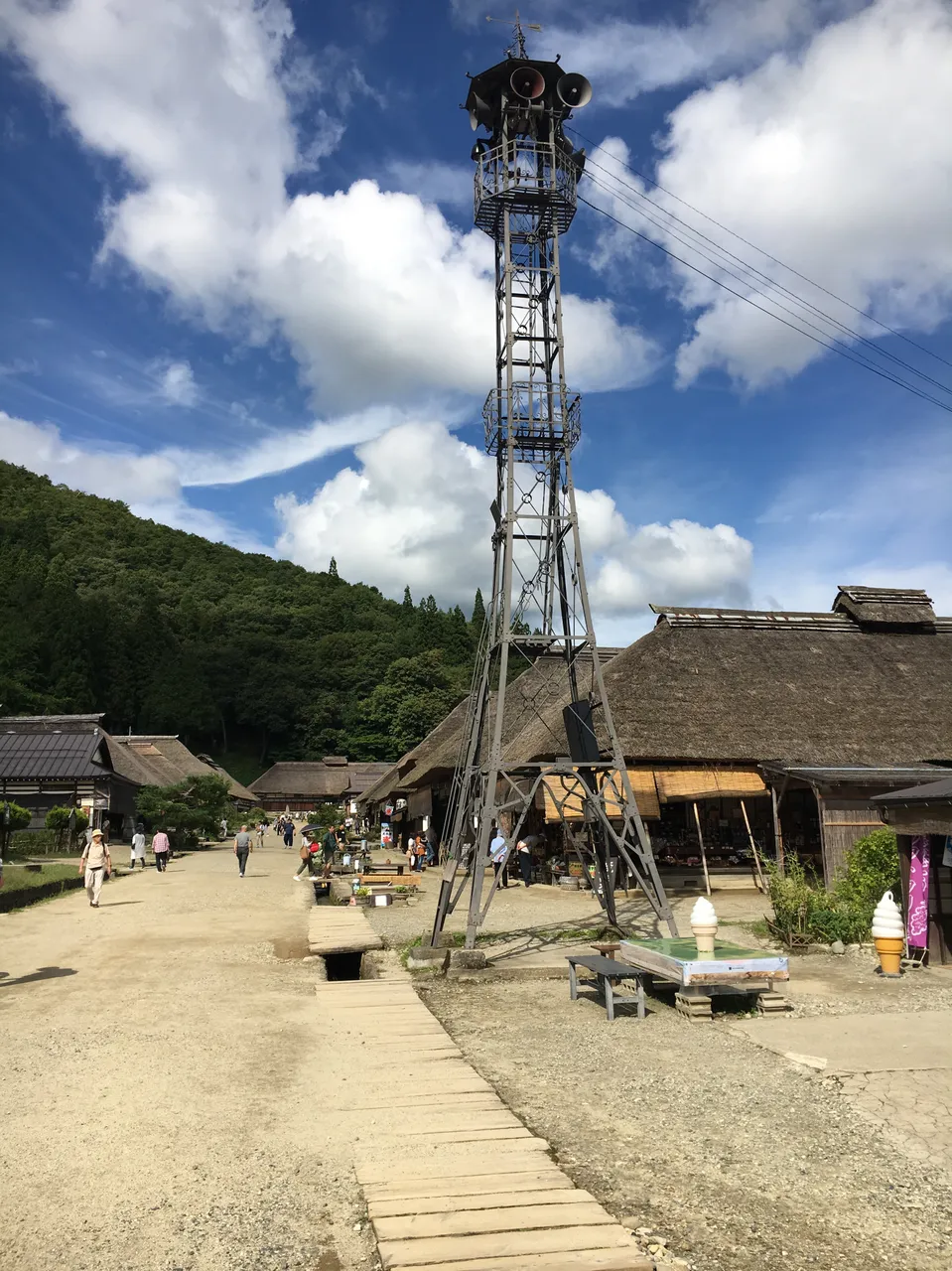
During our visit, the whole atmosphere was pretty relaxed. There weren't too many visitors in the village and we were able to stroll around quite comfortably, look around and take a few photos. Since I often have to consider myself a tourists as well, I will do as the Romans do and also take lots of photos. Sometimes I even get the feeling that I am overdoing it.
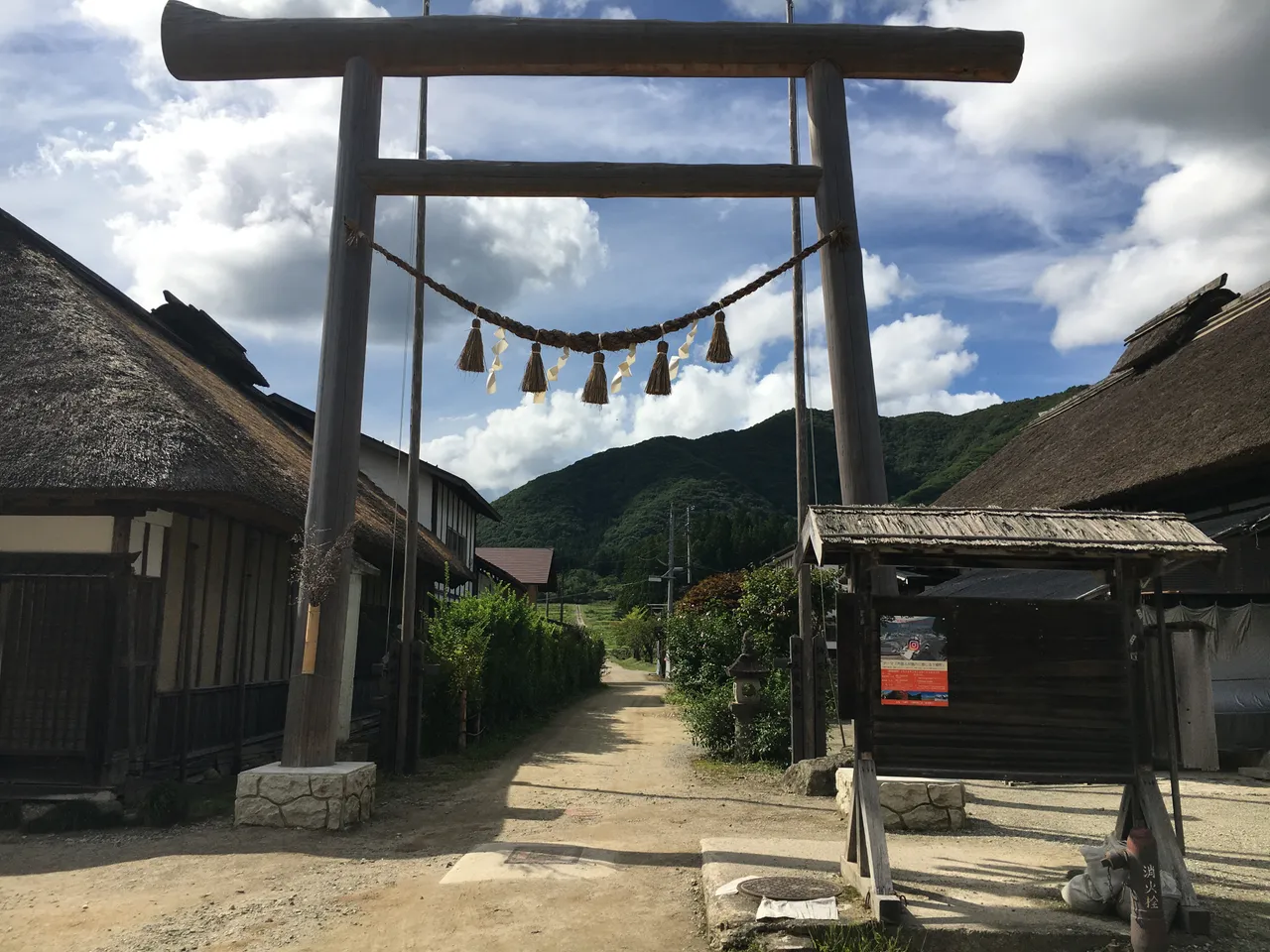
The weather had played along perfectly on this day and flattered us the whole time. Also in terms of color everything was in its place. Blue and white were shining from above, and the green was flashing mostly from the background. And in front there were all those old buildings , and of course there also was the obligatory shrine right between two of them.
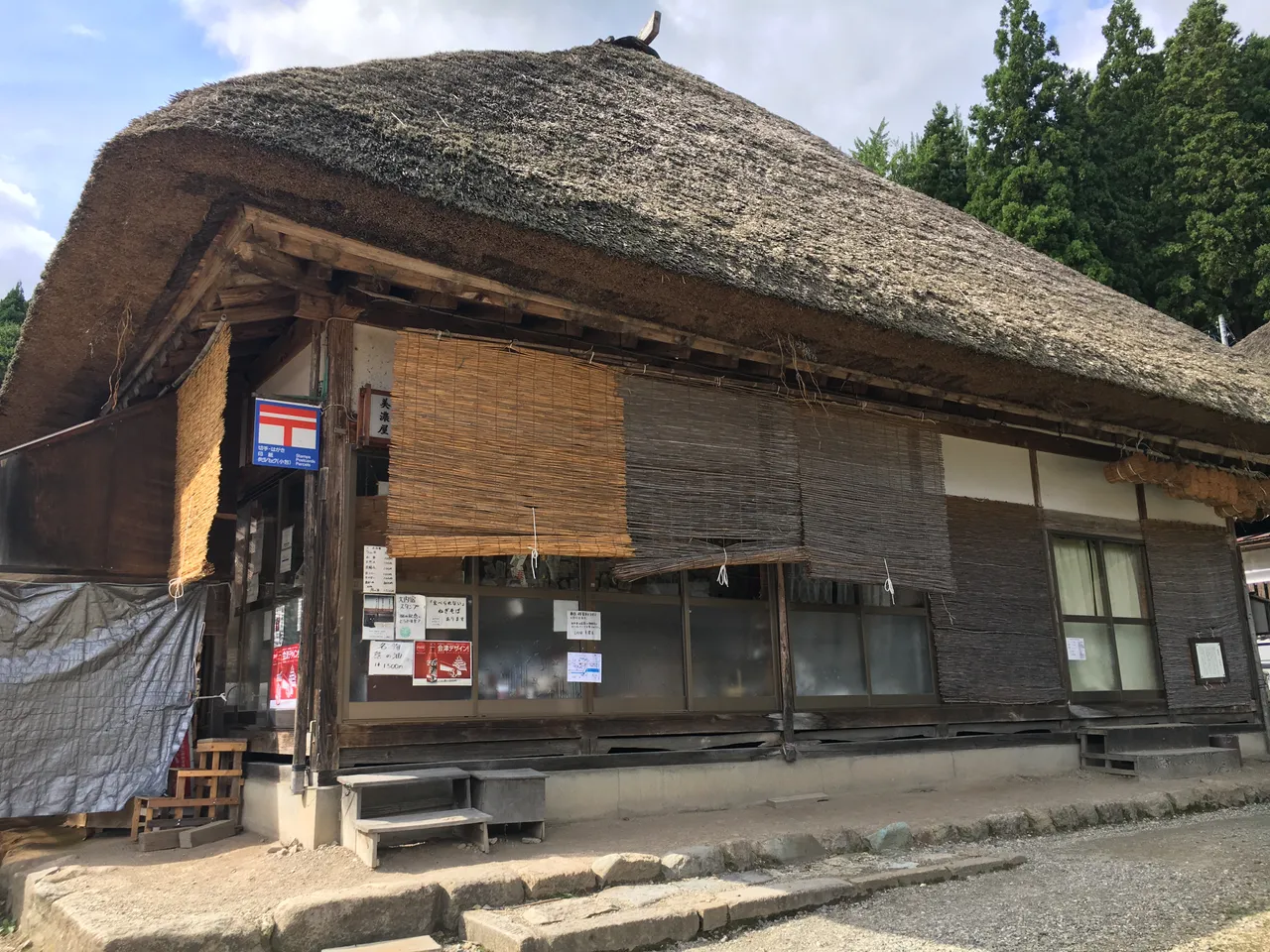
Oh yes, there was also a post office here in the old postal station. The sign resembling a T indicates the Japanese post office (JP = JAPAN POST), and was quite discreetly attached to one of the old houses. So if you need to send your postcard from here, this building would be just right.
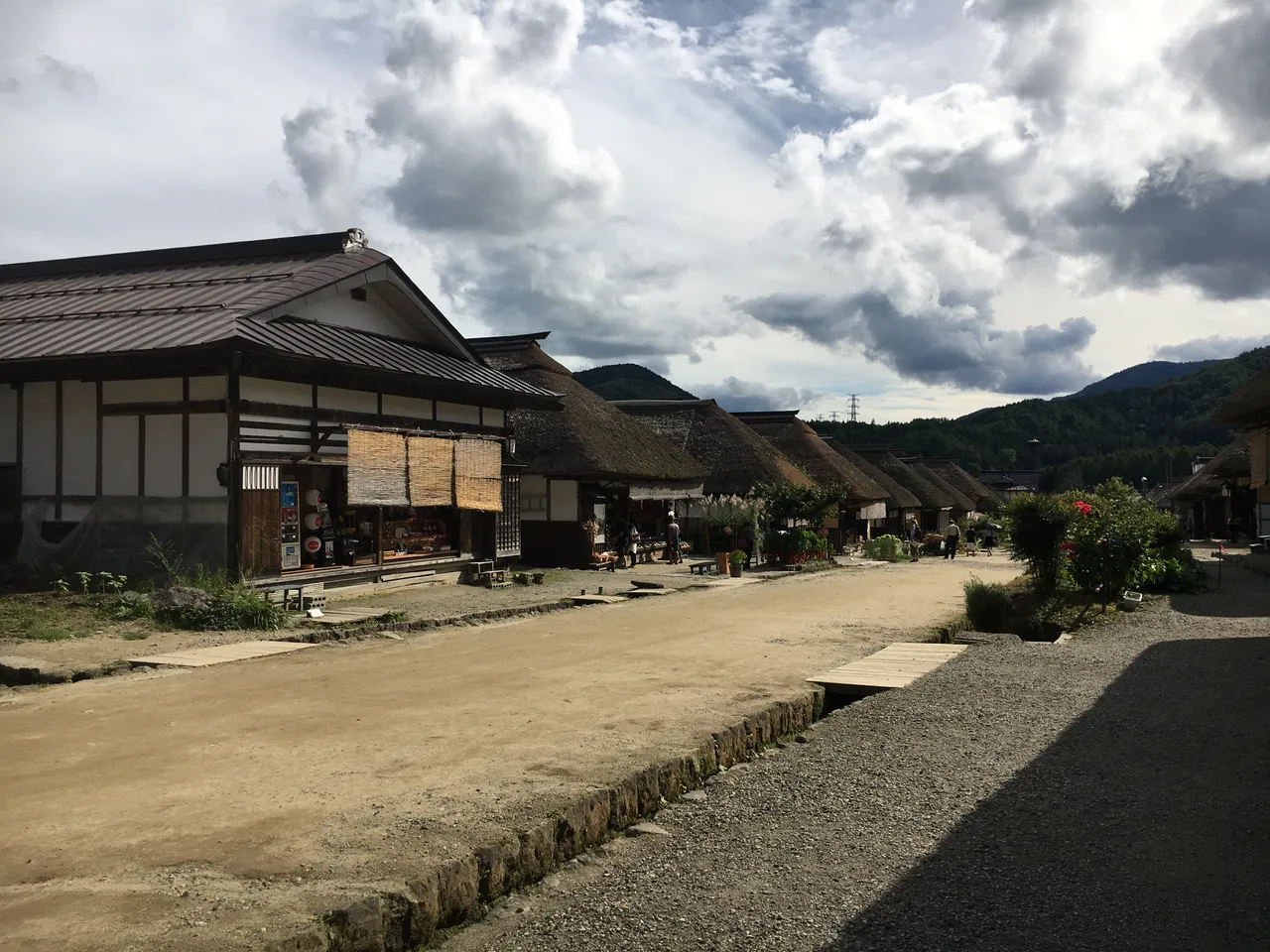
As already mentioned, there was not too much going on that day, but judging by the dimensions of the (totally overpriced) parking lot, that doesn't always seem to be the case. Even today some coaches were waiting there, and on a weekend in the main travel season, I imagine quite a few tourist caravans are passing through the place. Why should that be different in Japan and explicitly in Ochijuku? Tokyo is not so far away and there are several tours bringing people. And because even in the old time there were aways passing people through here, they had good reasons to build this Shukuba in this very place, where it has survived until today.
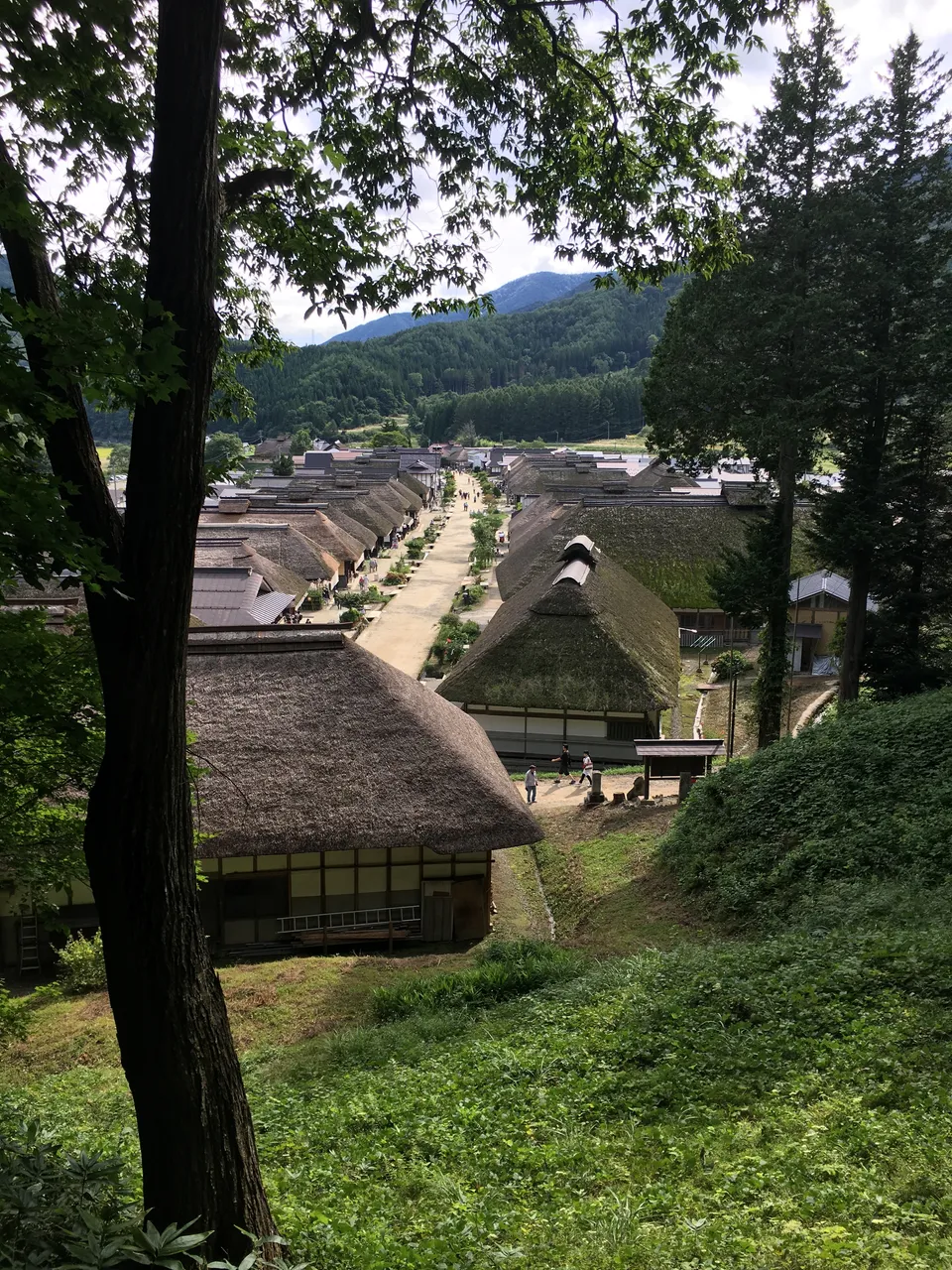
If you climb up the hills at the end of the street, you have a wonderful view over the whole settlement. And from here you probably get the best idea of what Ochikuku has looked like already during the Edo period and what makes this place special. The buildings down there were already at the same location a few hundred years ago, when Japan was still ruled by the Shogun and the Samurai. And at least the latter passed by here countless times and sought accommodation in these very houses. Despite all the business, Ochijuku is still history which you can feel and touch. And without the stores and restaurants, the place would probably not have been able to survive and exist in this form until today. No money - no honey, this is also true in the land of the rising sun.
We then enjoyed a little of this view and imagined how busy the place might have been once upon a time. Magnificent and powerful samurai, wealthy merchants and probably also not so well-heeled Buddhist pilgrims came togther here where they were entertained and spent some cheerful hours.
It's nice that here in Japan there are still these genuine and quieter places, so very different from the often over-excited, colorful and noisy megacities. I always like to learn something new, and on many of my previous trips, the history and past of this fascinating country and its people was simply part of the experience. I'm also looking forward to the next time when I'll have the chance to discover and and explore some new Japanese territory for myself again. It may have to wait a bit, but the opportunity will come.
For today, we bid farewell to Ochijuku, the former postal station on the old road from Tokyo to the Aizu region. The sun was starting to slowly hide behind the hills but still bathed the sky in a beautiful light, just right to show us the way back.
The Aizu region still has highlights to offer for me as well and I hope to discover many more of them. And I will be happy to share the impressions I can take from here with you. If you want to see and experience more of Japan, the land of the rising sun, then check back here soon. For today, I wish you a wonderful day and say:
またね matane
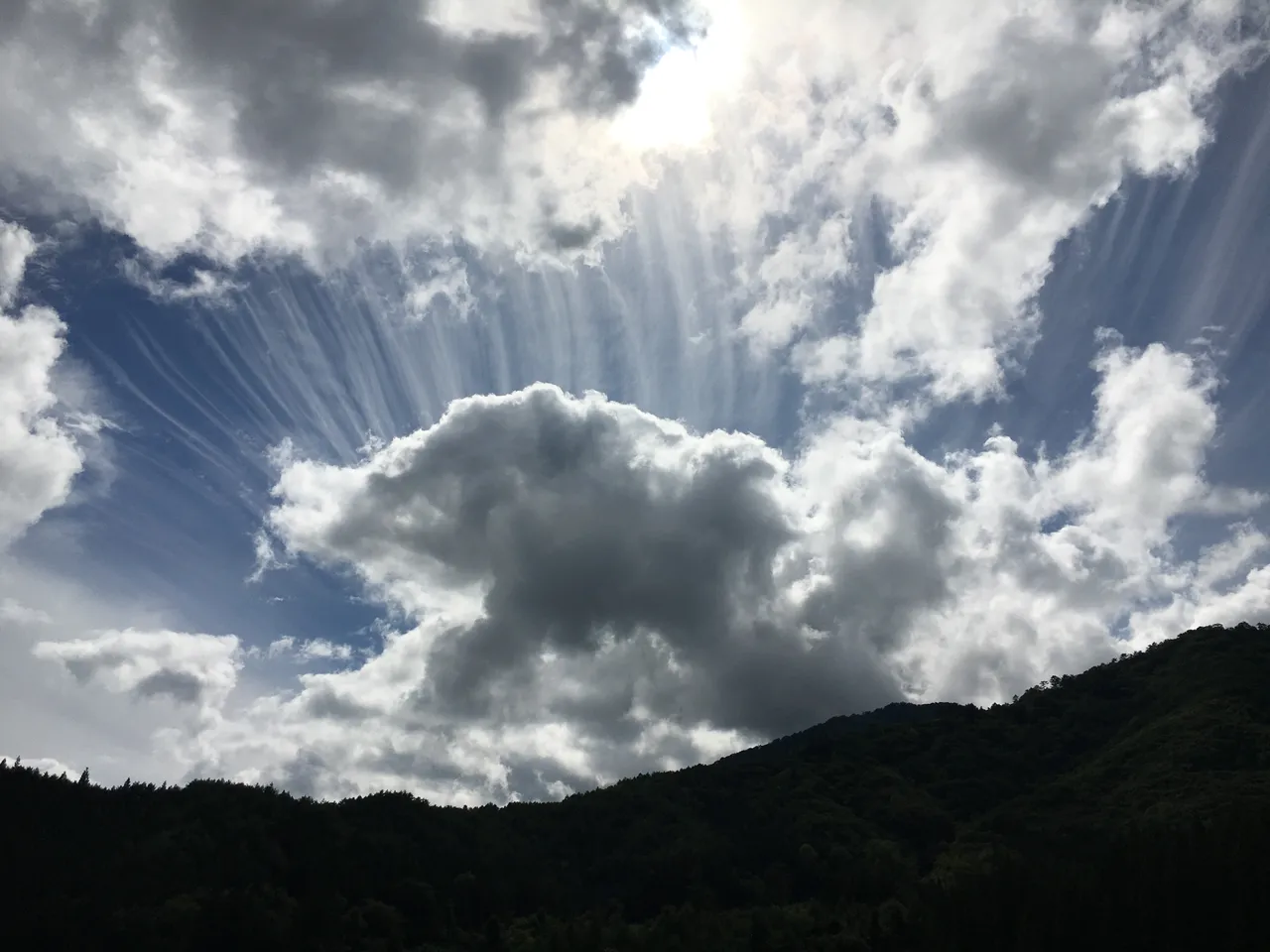
[//]:# (!pinmapple 37.332457 lat 139.860048 long Revealing the past in Ochijuku d3scr)